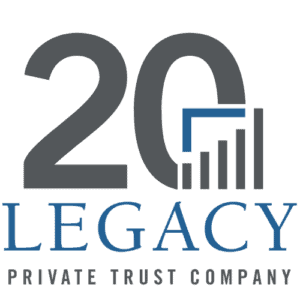According to recent figures from the U.S. Department of Labor’s (DOL) Employee Benefits Security Administration, of the 59 million wage-earning and salaried women working in the U.S., only 47% participate in a company retirement plan.
Part of the explanation may be that women’s employment patterns are different. They are more likely to work part-time jobs that don’t qualify for retirement plan coverage or to work fewer years in plan-covered employment because of interruptions in their careers to take care of family members.
It’s a bit ironic because, on average, a female retiring at age 55 can expect to live another 27 years, four years longer than a male retiring at the same age, and, therefore, needs to save more to cover those extra years.
The DOL offers the following checklist of items for women to think about and act upon concerning retirement plans and planning:
- Coverage. If your employer offers a retirement plan, join it as soon as possible and contribute as much as the plan allows. Many employers who provide a 401(k) plan will match a percentage of the employee contribution. As a result, when the match is figured in as part of your investment return, the rate you earn will likely be higher than the rate you might receive from other investments. Don’t procrastinate. By saving early, you have time on your side. Your savings will grow, and your earnings will compound over time, tax-deferred. Only upon withdrawal of your money will you owe tax.
- Vesting. You may have to work a specified period in many companies to be eligible for benefits. Once you have satisfied the time requirement, your benefits will have “vested,” meaning you will have worked long enough to earn the right to receive them. Too often, says the DOL, employees, especially women, quit work, transfer to another job or interrupt their work lives just short of the time required to become vested. Ask the personnel office or plan administrator about the vesting period and other details of your company plan.
- Recordkeeping. In addition to asking questions of the company or plan officials, you should keep copies of the summary plan description (SPD) and any amendments. The SPD is a document that plan administrators are required to prepare. It outlines your benefits and how they are calculated. The SPD also spells out the financial consequences—usually a benefit reduction—if you decide to retire early. You probably received a copy of the SPD when you joined the plan. But you may request another one if you can’t locate it in your files. Also, remember to keep plan-related records from all jobs. They provide valuable information about your benefit rights, even when you no longer work for a company.
- Change of Employment. You may lose benefits you earned if you leave your job before being vested. However, once vested, you can receive benefits even when you leave your job. In such cases, the company may allow, or sometimes insist, that you take your money in a lump sum when you leave. However, some companies may only permit you to receive your money after retirement (some pension plans, for instance). The time when you can receive your benefits is spelled out in the SPD. A word of caution: If you receive your money in a lump sum, you will owe income tax, and if you are not at least age 55 or 59 1/2— depending upon the circumstances of your separation from employment—a 10% penalty. You avoid the tax and penalty by rolling over your payout from the plan to an IRA. The money transfer from the plan to the IRA should be direct from the plan to the IRA to avoid a 20% withholding tax.
- Alternative Retirement Plans. You don’t have to work for a company that offers a retirement plan to get the benefits of tax-deferred savings. Anyone receiving compensation, or married to someone receiving compensation, can contribute to an IRA. In addition, if you are self-employed, you can start a Keogh plan, a Simplified Employee Pension (SEP), or a Savings Incentive Match Plan for Employees of Small Employers (SIMPLE). As with other retirement savings plans, there may be tax consequences, and possibly penalties, if you withdraw your savings early.
- Social Security. More women than ever work, pay Social Security taxes and earn credit toward a monthly income for their retirement. These earnings can mean some income for you and your family in the form of monthly benefits if you become disabled and can no longer work. If you die, your survivors may be eligible for benefits. In addition, you may qualify for Social Security benefits through your husband’s work and can receive benefits when he retires or if he becomes disabled or dies. Special rules apply if you and your husband have been employed and paid into Social Security. Special rules also apply if you are divorced or have a government pension. Each year the Social Security Administration sends you a document that provides information about the benefits to which you may be entitled. You can calculate your estimated benefits by going to www.ssa.gov.
- Divorce. As part of a divorce or legal separation, you may be able to obtain rights to a portion of your spouse’s retirement benefits (or the spouse may be able to obtain a portion of yours). In most private-sector plans, this is accomplished with a qualified domestic relations order (QDRO) issued by a court. You or your attorney should consult your spouse’s plan administrator to determine what requirements the QDRO must meet.
- Death. Are you aware of the rules that govern your plan and your spouse’s plan if either of you dies? The rules are different based on the type of employer plan. If you or your spouse belong to a defined benefit (pension) plan, the survivor may be entitled to receive a survivor benefit when the enrolled employee dies. This survivor benefit is automatic unless both spouses agree, in writing, to forfeit the benefit. You must check the SPD or consult the plan administrator regarding survivor annuities or other death benefits. The rules may differ if you or your spouse participate in a defined contribution plan [a 401(k) plan, for example]. Again, consult the plan administrator for details about your rights.
In conclusion, the statistics show that women are not saving enough for retirement, which can lead to financial difficulties in their later years. Women’s employment patterns can explain some of these issues, but it is essential to take action now to prepare for the future. The Department of Labor’s checklist provides a useful guide to consider when planning for retirement. Joining a retirement plan, staying informed about the vesting period and other plan details, keeping records, being aware of the tax consequences of early withdrawals, considering alternative retirement plans, and being knowledgeable about Social Security, divorce, and death can all help women prepare for retirement. Women should take control of their financial future, and with the right steps, they can look forward to a secure and comfortable retirement.
If you are a Legacy client and have questions, please do not hesitate to contact your Legacy advisor. If you are not a Legacy client and are interested in learning more about our approach to personalized wealth management, please contact us at 920.967.5020 or connect@lptrust.com.
© 2023 M.A. Co. All rights reserved.
Any developments occurring after July 1, 2022, are not reflected in this article.
This newsletter is provided for informational purposes only.
It is not intended as legal, accounting, or financial planning advice.




